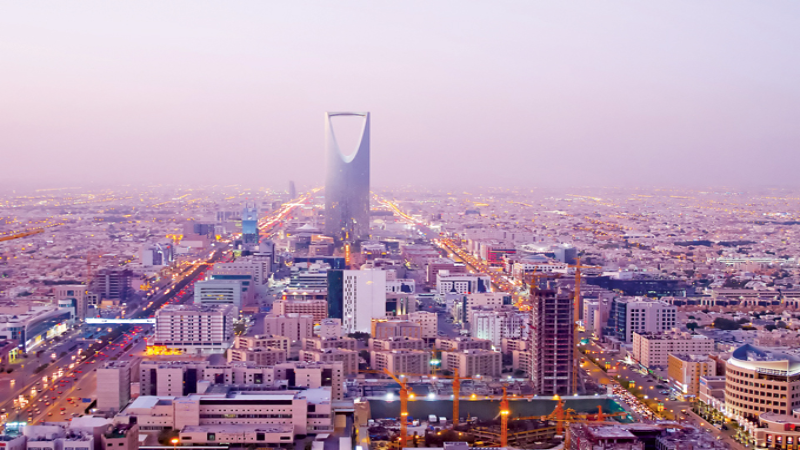
The direct contribution of travel and tourism to Saudi Arabia’s GDP was SR78.8 billion ($21.0 billion) in 2016. In its 2017 report on Saudi Arabia, World Travel & Tourism Council (WTTC) predicts that this figure will rise by 2.9 per cent in 2017, and by 3.8 per cent per annum, from 2017 to 2027, to SR117.5 billion ($31.3 billion).
One of the key factors in driving this growth is the government’s Saudi Vision 2030 – the Kingdom’s ambition to become the leading Arab nation – which has sparked a construction boom across the country.
DOMESTIC TOURISM
Nikola Kosutic, research manager at Euromonitor International, said: “The Saudi Commission for Tourism and National Heritage (SCTH) is investing generously in boosting domestic tourism, launching a number of new initiatives. Live Saudi Arabia, in collaboration with Saudi Airlines and Aramco, for example, encourages residents to visit historic locations, while Leave No Trace aims to raise awareness of the importance of preserving the natural beauty of the country.”
Other schemes aimed at boosting domestic tourism include The Colours of Saudi Arabia Forum, which organises various events and competitions related to photography. A tourism call centre is also now in place, providing intensive information about attractions and events across the Kingdom.
“This is not to mention the famous Janadriyaha and Jeddah Ghair festivals, which are held annually and are attracting a growing number of visitors every year,” added Kosutic.
HOTELS THIS YEAR
The hotel market in Saudi Arabia may reach $4.29 billion in 2017, according to a new report prepared by Euromonitor International. “Over the last five years, Saudi Arabia’s hotel market value has grown steadily by 4.2 per cent to 6.4 per cent,” commented Kosutic. “We are expecting to see similar growth rates over next five years, with CAGR estimated at 4.5 per cent.”
The country will see a record 68 new hotels and 29,033 hotel rooms open across its major cities in 2017.
Major new hotels forecast to open throughout the Kingdom this year include Assila Hotel Rocco Forte (Q1 2017), TIME Qurayyat Hotel (Q2 2017), Nobu Hotel Riyadh (Q2 2017), Swiss-Belhotel Al Khobar (Q4 2017) and the highly-anticipated Abraj Kudai Towers, which will become the world’s biggest hotel when it opens its 10,000 rooms in Q4, 2017.
Nobu Hospitality and Rocco Forte Hotels are international brands that will enter the Saudi Arabian market for the first time this year.
AL KHOBAR
Al Khobar has emerged as the third top area for hotel development in Saudi Arabia this year, demonstrating the growing market for leisure and business tourism across the Kingdom.
With 20 hotel projects underway, the city has overtaken long-term hub for religious tourism – Makkah (19 projects) – and now follows closely behind Jeddah (44 projects) and Riyadh (48 projects).
Filippo Sona, head of hotels – Middle East & North Africa at Colliers International, commented: “Major hotel brands including Novotel, Park Inn and Intercontinental are already placing these destinations on the global map. Occupancy rates are historically high across the country, tourism figures are on the increase and its some 27 million residents are travelling more than ever before. With 175,000 rooms in the market at present and several more hotels under construction, there is the potential to more than double the number of rooms in the Kingdom through the opportunities presented through these secondary cities.”
POSITIVE OUTLOOK
In addition to the projected growth in domestic leisure tourism, there are a number of additional factors supporting the development of culture, leisure and entertainment offers in the country. Saudi Arabia has a large and fast-growing population, which is forecast to grow from 31.5 million in 2015 to 37.6 million in 2025. Interestingly, 57 per cent of Saudi Nationals are under the age of 25 with increasing aspirations for quality leisure and entertainment experiences.
Saudi Vision 2030 is targeting an increase of household spend on culture and entertainment from the current level of 2.9 per cent to 6 per cent. The country faces a significant lack of out-of-home culture, leisure and entertainment: the existing offer is on the whole limited to public parks, malls, festivals and traditional museums. This is now changing with the recent opening of commercial attractions such as KidZania in Jeddah and Snow City in Riyadh, together with the world class King Abdulaziz Centre for World Culture in Dhahran.
The country is increasingly adapting a competitive and open business environment, with the government eager to engage and partner with international leisure and tourism investors, developers and operators e.g. Six Flags partnership for up to three theme parks.
Education and training: ‘Experience Saudi Arabia’ is a programme that aims at educating Saudi Arabian youth about the heritage and culture of the country. New courses and training to support employment in leisure and hospitality are also being introduced.
The large-scale leisure, culture and entertainment projects now emerging in Saudi Arabia are expected to encourage Saudis to spend more of their disposable income within the country rather than overseas. With other GCC countries also investing heavily in new tourism attractions and infrastructure, the region is becoming increasingly competitive. Nonetheless the prospects for growth in Saudi Arabia are bright.
• Get more information and exclusive interviews from Saudi Arabia on pages 28 to 31.
